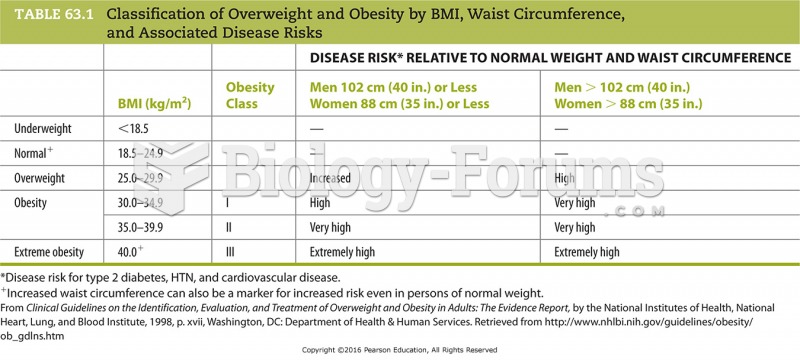Answer to Question 1
Correct Answer: 2
Rationale 1: There is no problem with the chemical messengers that are present.
Rationale 2: When corticosteroid levels increase too much, the adrenal glands send a negative feedback message to the hypothalamus. The hypothalamus decreases its output of the hormone that tells the anterior pituitary to make less ACTH. In this case, the pituitary is defective and cannot act on the hypothalamic message. If the dose of corticosteroid is not decreased, the client will continue to develop Cushing syndrome.
Rationale 3: There is no problem with the receptors that are present.
Rationale 4: ACTH is not formed, but that is because there is no pituitary activity.
Global Rationale: When corticosteroid levels increase too much, the adrenal glands send a negative feedback message to the hypothalamus. The hypothalamus decreases its output of the hormone that tells the anterior pituitary to make less ACTH. In this case, the pituitary is defective and cannot act on the hypothalamic message. If the dose of corticosteroid is not decreased, the client will continue to develop Cushing syndrome. There is likely no problem with either the chemical messengers or receptors. ACTH is not formed if there is no pituitary activity.
Answer to Question 2
Correct Answer: 2
Rationale 1: This is not a positive feedback mechanism.
Rationale 2: Insulin lowers circulating blood sugar by allowing glucose to enter cells. When the blood sugar is already too low, the pancreas notes the low level and refrains from releasing additional insulin into the bloodstream. This chain of events is known as negative feedback.
Rationale 3: This is not an example of up-regulation.
Rationale 4: This is not an example of down-regulation.
Global Rationale: Insulin lowers circulating blood sugar by allowing glucose to enter cells. When the blood sugar is already too low, the pancreas notes the low level and refrains from releasing additional insulin into the bloodstream. This chain of events is known as negative feedback. It is not a case of up-regulation or down-regulation.







